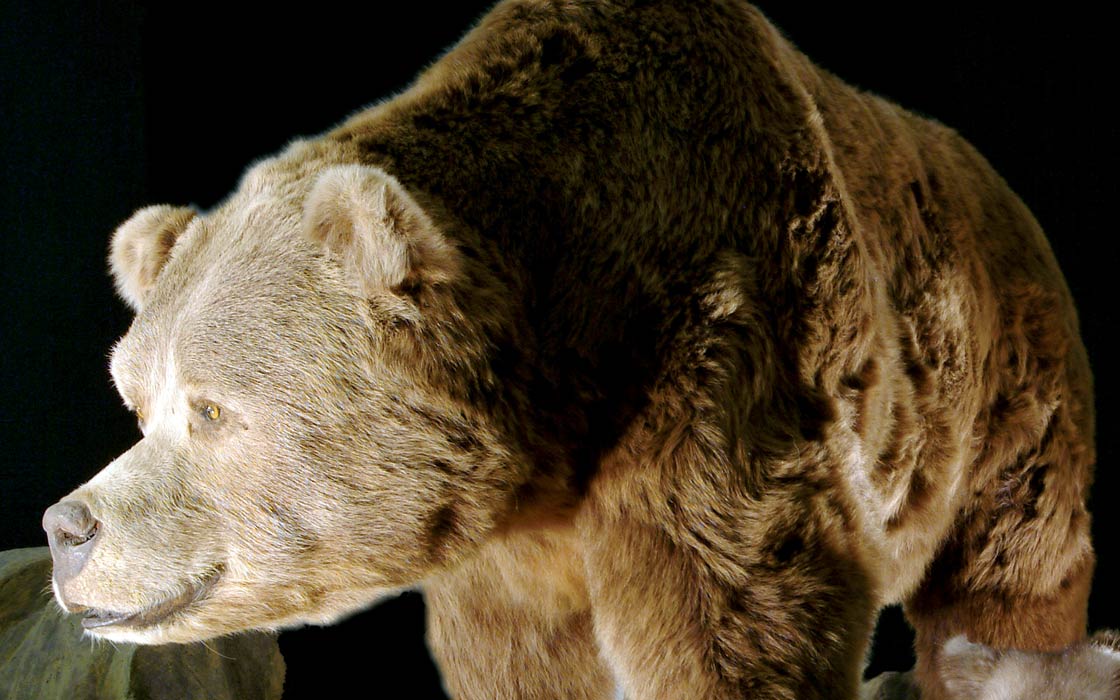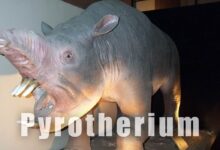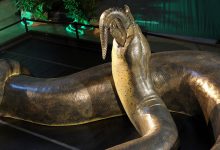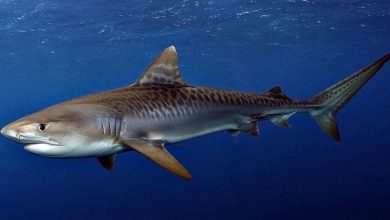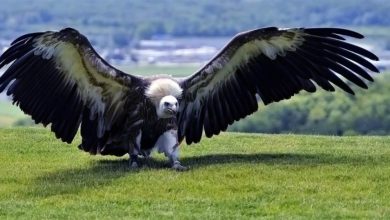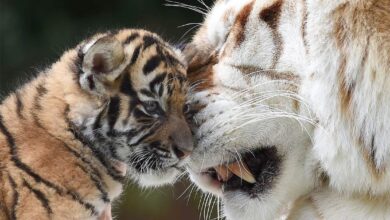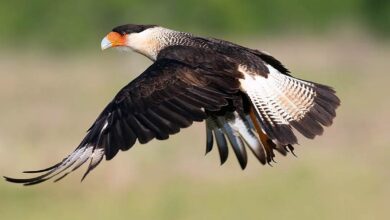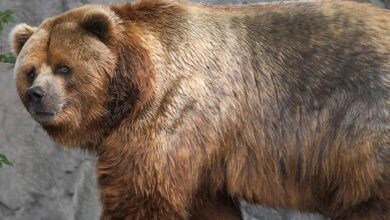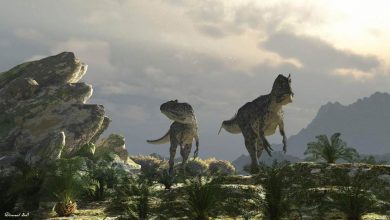Cave bear (Ursus spelaeus)
Smaller than its North American cousin – the short-faced bear. The predator that feeds almost exclusively on plants was probably an object of worship of primitive people. How did the cave bear deserve the respect of the European tribes of the late Pleistocene? Was it because of its size? Or perhaps nature? Let’s find out what was (or could be) a relative of modern brown bears, whose asylum was the limestone caves of Europe.
Classification
- Kingdom: Animalia
- Phylum: Chordata
- Class: Mammalia
- Order: Carnivora
- Family: Ursidae
- Genus: Ursus
- Species: †Ursus spelaeus
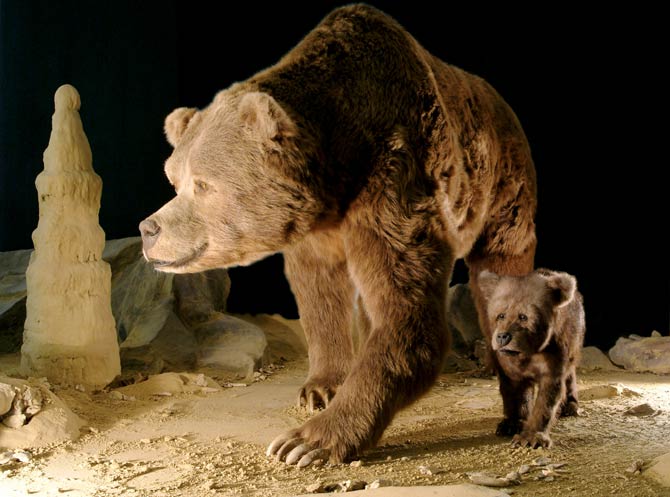
Occurrence and Dating
Cave bear ruled in Europe in the Pleistocene epoch from about 250,000 to 24,000 years ago during the peak of the ice age.
The range of the cave bear’s occurrence covered practically all of Europe: from Spain, Great Britain, through Italy, Germany, Poland, the Balkans, Romania, part of Russia (including the Caucasus), and also northern Iran. Evidence of its existence has not been found in Scotland, Scandinavia, or the Baltic States, which were covered by extensive glaciers at that time. Most of the skeletons of these animals have been found in Austria, Switzerland, southern France, northern Italy, Spain and Romania.
The innumerable amounts of fossilized cave bear bones unearthed throughout Europe indicate that the Old Continent was under siege by these powerful predators. Some experts, however, believe that the hundreds of thousands of bones found in the caves may have been accumulating for about 100,000 years or longer – hence their enormous number. The caves were used by successive generations of cave bears.
This bear probably inhabited the low parts of mountain areas, especially regions rich in limestone rocks. It seems to have avoided open plains but preferred forests or wooded edges.

Characteristic
Appearance
The cave bear clearly differed from the modern brown bear (Ursus arctos) in terms of its skull structure. In today’s representatives of the species, the forehead is flattened, while in the described predator it was protruding and steeply cut. The skull itself was very wide.
He had massive limbs, and his body resembled modern European bears. It also reached sizes similar to them. It was comparable in size to the largest relatives living today; males could weigh 400-500 kg, females by about 50% less (225-250 kg). The standing height was in the range of 2.7-3.5 m, therefore it was about 30% longer than the average brown bear.
Larger During the Ice Age
Interestingly, cave bears were larger during the ice age, and smaller when glaciation receded – this was most likely due to an adjustment in heat loss – the larger the animal, the slower it loses heat.
In museums
90% of museums have male skeletons or reconstructions. This is due to the initial misconception that female skeletons are dwarf specimens, secondly, for the same reason as always – we want to watch what is the biggest 🙂
Specimens dated to the last glaciation usually had 2-3 premolars missing. It may have to do with the diet they were following.

Diet
The skeletons found, show that the cave bear’s teeth are more worn than most modern relatives. This may indicate a diet of hard, hard-to-chew foods. Plants seemed to dominate his diet. European bears (Ursus arctos arctos) today also feed on large amounts of plants, but not as much as their cave ancestors.
The cave bear also included animal protein in its menu. It is possible that he exhibited cannibalism, mainly on individuals who died during hibernation.
The current scientific theory, therefore, is that the cave bear ate plants more often than any other modern Ursus species. It is possible, however, that he was an omnivore capable of adapting to the prevailing environmental conditions.
When food was scarce during the severe Pleistocene winters, the cave bear itself became a tasty morsel for another predator – the cave lion. The skeletons of bears and lions found next to each other testify to this.
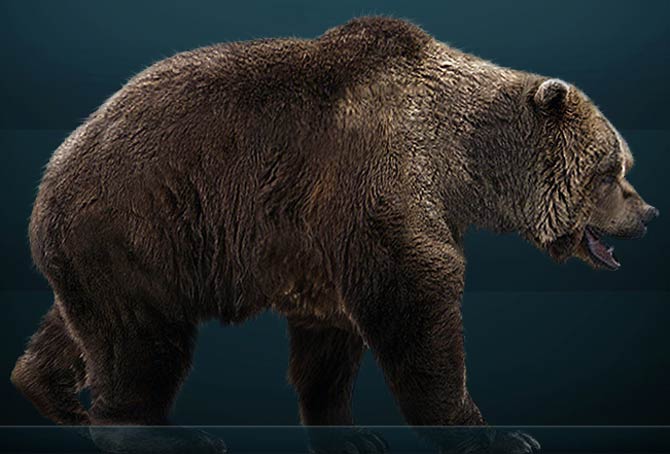
Relationships with people
Cave bear cult
Between 1917 and 1923, more than 30,000 cave bear skeletons were excavated in the Swiss Drachenloch Cave. Apart from them, a stone chest or a coffin made of low limestone walls was also found. Inside the chest were lots of cave bear skulls. In one of them, there was a femur of another individual. Specialists concluded that this is evidence that religious rituals were carried out among prehistoric people.
The main objects of worship were bears, mainly skulls that served as trophies. It is possible that the hunt for a large mammal was part of the ritual. Archaeologist Timothy Insoll strongly contradicted this hypothesis, however, saying that the skulls found were not evidence of the religious role that bears could have played among European tribes.
The find from Switzerland is not unique. A similar discovery was made in southern France. In a rectangular cavity, there were the remains of at least 20 different individuals, which were covered with a stone slab. Nearby, fossilized Neanderthal bones were unearthed in a similar rock “grave”. There were many different items beside him, including a bear’s humerus.
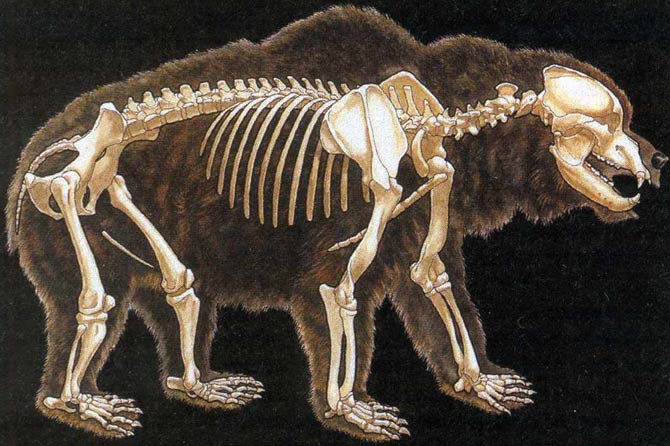
Extinction
For a long time, the prevailing view was that the cave bears were killed by the people of that time. Originally, the date of its extinction was estimated at 10-11 thousand years ago. However, this theory was almost completely rejected because at that time the European population of Homo sapiens was too small to endanger the survival of any species. However, this does not change the fact that there could be competition between them for territories, i.e. caves.
Some evidence shows that cave bears could not hibernate elsewhere outside the caves (e.g. in brush), which distinguishes them from the more flexible brown bear. With the expanding human tribes, the number of free caves in which the bears could shelter decreased. This could have contributed significantly to the high mortality rate of these animals, leading to their extinction. This hypothesis is still being analyzed by researchers.
Compared to other megafauna species that also became extinct during the peak ice age, the cave bear had a more specialized diet and a relatively limited geographic range. This could explain why it died out earlier than the other great animals of the Pleistocene. Over time, however, it was discovered that the cave bear’s diet may have changed, and the reduction in genetic diversity took place long before its extinction.
Thus, the most important cause of the extinction of the cave bear has not yet been identified. Perhaps someday we will be able to discover this secret.
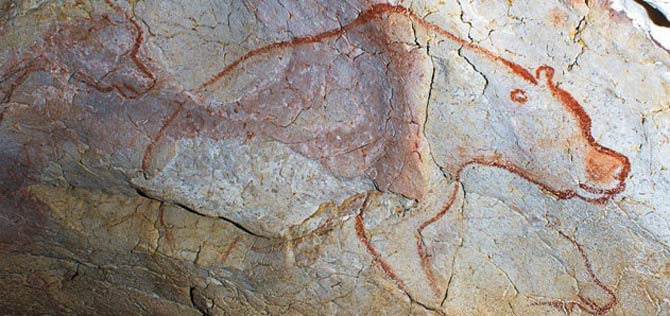
Detailed data / size
The cave bear (Ursus spelaeus)
- Height at the withers: 120-134 cm (3.9 – 4.4 ft)
- Height standing: up to 350 cm (11.5 ft)
- Weight:
- males 400-600 kg (880 – 1322 lb); max. 1000 kg (2200 lb)
- females 225-250 kg (496 – 551 lb)
- Dated: 250-24 thousand years ago (Pleistocene)
- Distribution: Europe
Various estimates are available for the weight of cave bears. In 1967 Kuurten estimated its weight in the range of 410-440 kg, in 1976 he expanded this range: 400-450 kg. In 1994 Viranta estimated the weight of males at 224-1316 kg, and of females at 224-986 kg, suggesting at the same time that the average weight of males was 319 kg, while females were 244 kg. Vereschagin and Baryshnikov suggested in 1984 that the largest cave bears in the hibernation period could weigh up to 1000 kg.
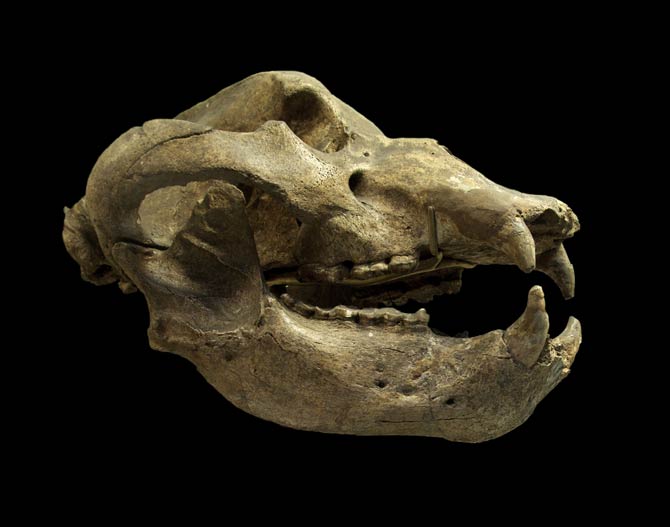
Cave bear (Ursus spelaeus) – interesting facts
- The name of the cave bear, similarly to the Latin Ursus spelaeus, is associated with the fact that the remains of these animals are found mainly in caves.
- It is believed that the cave bear spent a lot of time in the caves, not only during the hibernation period as do modern brown bears.
- The closest modern relative of the cave bear is the brown bear. Both species come from a common ancestor, the so-called Etruscan bear (Ursus etruscus), which lived from about 5 million to about 100 thousand years ago.
- There are many caves in Europe where the remains of these large mammals have been found. In Poland, such an example is the Bear Cave – the longest cave in the Sudetes mountains.
- The skeleton of a cave bear was first described in 1774. This was done by Johann Friederich Esper. Initially, the remains were considered the remains of dragons, unicorns, monkeys, canines or felines. But Esper figured they were fossilized bones of a polar bear. Only 20 years later, the anatomist Johann Christian Rosenmüller gave the find a new name.
- Thousands of cave bear skeletons were destroyed during World War I.
- Scientists reconstructed the DNA of the cave bear. Not to the extent of cloning it, but sufficient to confirm its relationship with modern brown bears.
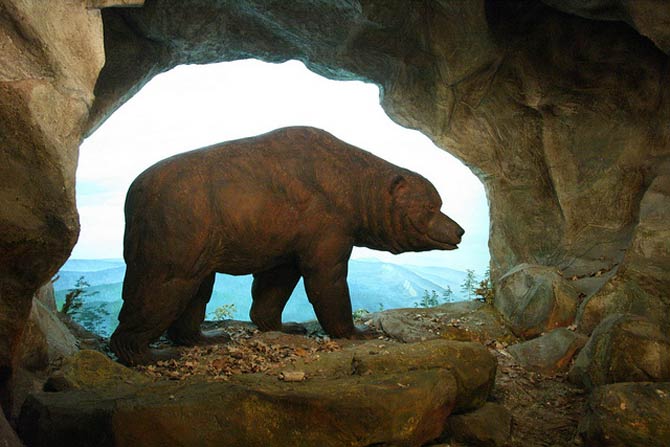
Recommended
- Grizzly
- Brown bear
- Kodiak bear
- Fastest animals
- Fastest birds
- Lion vs tiger
- Animal fights
- American lion
- European cave lion
- Smilodon – Saber-toothed tiger
- Big cats
- Black panther
- Leopard
- Snow leopard
- Lions
- Tigers
- White lions
- White tigers
- Bengal tiger
- Sumatran tiger
- Liger
- African Lion

